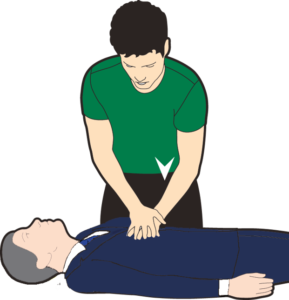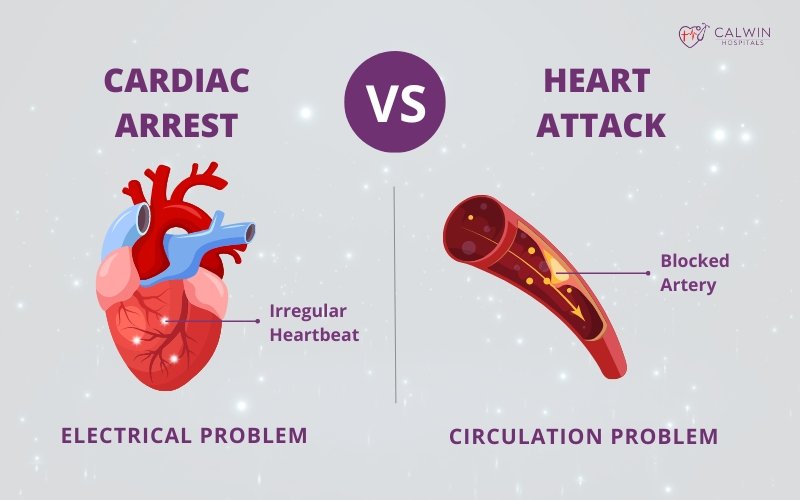You’ve likely seen people begin chest compressions immediately when someone faints. But is CPR always the right step?
What would you do if someone suddenly collapsed in front of you? Would you attempt CPR?

Today, let’s dive into:
-
What CPR really is
-
Who actually needs it
-
When it should be done
-
Why fainting happens
-
How to respond safely and effectively
What is Fainting?

Fainting, also called syncope, occurs when the brain experiences a temporary drop in blood flow, oxygen, or glucose levels. This can cause dizziness and eventually loss of consciousness.
Why Does This Happen?
Syncope commonly happens due to low blood pressure, preventing enough oxygen from reaching the brain. While it can sometimes be harmless, it may also indicate an underlying medical issue.
Common Causes of Fainting

Fainting can occur due to:
-
Standing too long in the sun
-
Sight of blood or injury
-
Medical anxiety (e.g., seeing an injection or during a blood test)
-
Blood loss from injuries
-
Low blood sugar due to poor eating
-
Emotional stress or shock
These are often non-life-threatening situations.
Serious Causes of Fainting
There are more severe reasons someone might faint:
-
Heart attack
-
Major injury
-
Stroke or seizures
-
Serious illnesses affecting the heart or brain
⚠️ But remember: not everyone who faints needs CPR.
Who Actually Needs CPR?
CPR should only be performed on someone experiencing cardiac arrest — when the heart has completely stopped beating.
Fainting does not always mean cardiac arrest. If the heart is still beating, CPR is not necessary.
How to Recognize Cardiac Arrest
Here’s how you can identify if someone has had a cardiac arrest:
-
Unresponsive after tapping or calling their name
-
No breathing (chest is not rising and falling)
-
No pulse when checking the carotid artery
If all three are present, the person needs immediate CPR.
What Causes Cardiac Arrest?
Some common causes include:
-
Electric Shock – disrupts the heart’s rhythm
-
Hypothermia – extreme cold can stop the heart
-
Severe Blood Loss – can lead to system shutdown
-
Potassium Imbalance – affects heart’s electrical activity
-
Heart Attack – can eventually cause the heart to stop
Cardiac arrest might follow fainting in some cases — but not always.
Cardiac Arrest vs Heart Attack

-
Heart Attack: Blood supply to the heart is blocked. The heart still pumps, but muscle damage occurs.
-
Cardiac Arrest: The heart completely stops beating — this is when CPR is critical.
Smoking is a major contributing factor to both.
What To Do If Someone Faints

-
Ensure Scene Safety
-
Check surroundings for hazards (e.g., electric shock risk). Don’t rush in blindly.
-
-
Check Responsiveness
-
Tap their shoulder. Ask their name. If they react, do not perform CPR.
-
-
Check for Pulse & Breathing
-
Locate the carotid artery (on either side of the neck, next to the windpipe).
-
Feel for a pulse for 10 seconds.
-
Watch their chest: if it’s not rising or falling, they may not be breathing.
-
✅ If no pulse and no breathing are detected within 10 seconds, start CPR immediately.
How to Check Carotid Pulse
-
Place your fingers on your neck to find the trachea (windpipe).
-
Move your fingers slightly to the right or left.
-
Press gently to feel for a pulsation.
Never press both sides at once — it can restrict blood flow to the brain.
Begin CPR If:
-
The person is unresponsive
-
No breathing is observed
-
No pulse is detected
Call for emergency medical help immediately. Begin chest compressions as per CPR guidelines.
Learn CPR: Take a BLS Course
Everyone — not just healthcare professionals — should learn CPR.
A Basic Life Support (BLS) course teaches:
-
When and how to perform CPR
-
How to give rescue breaths
-
How to use an AED (Automated External Defibrillator)
-
How to handle emergency scenarios confidently
Becoming BLS certified means you can save lives during emergencies.
Final Thoughts
Fainting does not always indicate cardiac arrest. CPR should only be performed when the heart has truly stopped beating.
If you find yourself in such a situation:
-
Stay calm
-
Ensure safety
-
Check for response, pulse, and breathing
-
Perform CPR only if required